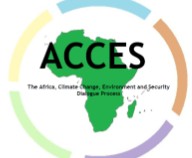Description
Following the revision of the initial Vulnerability Discussion Paper in light of the first Dialogue Forum (Addis Ababa – 11th October, 2010), ACCES members maintain that Africa is the most vulnerable continent in terms of the capacity to adapt to the predicted effects of climate change.
Though it is difficult to make exact assessments related to climate change issues, and while recognising that most African countries do and will suffer from the security implications of climate change, when aggregating the outcome of individual assessments Burundi, Chad, the Democratic Republic of Congo, Kenya, Ethiopia, Niger, Nigeria, and Sudan were identified as the most vulnerable states in Africa in the context of climate change and security. The Sahel region is considered the most threatened region on the continent.
Climate change will likely lead to substantial changes in precipitation patterns, including more frequent droughts, floods, and storms. The sub-tropical zones have become more arid, and desertification continues in the Sahara. The forecasted higher surface temperatures will increase evaporation rates, making water increasingly scarce and water security unstable, in turn strongly affecting human security and increasing the risk of water-related conflicts. The number of people in Africa experiencing water scarcity may increase by 75 million until 2020 and several hundred million by 2050.
In Africa, climate models warn especially about the immediate impact of changing rainfall patterns on grain yields, runoffs, water availability, and the survival of plant and animal species that are expected to shift production seasons, alter productivity, and modify the set of feasible crops. A large part of the population is engaged in subsistence agriculture and farm marginal lands under rain-fed conditions that make the population particularly vulnerable to the adverse effects of climate change. Among 22 countries across the globe are considered to be in protracted food crises and 17 come from Africa.
Africa is the lowest consumer of energy, there are 500 million people living without electricity in sub-Saharan Africa where 23 of the 48 countries are vulnerable to “energy shocks". Given that approximately 80% of African households use biomass fuels (e.g. wood and vegetation) for cooking and water heating, the mixture of unsustainable harvesting of forests prone to climate change threatens with decreased forest cover rates, increased soil degradation and supply disruption, and, as a consequence, poses threat to human security. A move towards “energy autarky” by some states to protect energy supplies may lead to inter-state disputes.
Whilst stating that one cannot assume that climate change alone will lead to mass migration, it is expected that the majority of environmental migration and displacement will be internal or close to bordering countries (as opposed to international migration). In the early and intermediate stages of environmental degradation, migration is likely to be temporary, circular, or seasonal in nature. At the same time, when environmental degradation becomes severe or irreversible, for instance, due to sea-level rise, migration can become permanent and may require relocation of affected populations, either internally or in another country. A much larger number of people are expected to migrate due to gradual deterioration of environmental conditions rather than natural disasters. Such movements can lead to increased tensions in receiving areas if not addressed, particularly when resources are already scarce or strained in these areas.
Natural hazards are increasing in number and frequency, and affect most countries in Africa. Sub-Saharan Africa is one of the most severely affected areas of the world. In 2008, there were 96 disasters recorded and they included 44 floods and 9 droughts that affected 16.3 million people and incurred economic losses estimated at some 1 billion dollars. Three of the five regions across the globe that are at risk of flooding in coastal and deltaic areas of the world are those located in Africa: North Africa, West Africa, and southern Africa.
Information
- Author(s)
- Daniel Fiott, Editor
- Publisher
- Africa, Climate Change, Environment and Security Dialogue Process
- Place published
- Brussels
- Date / journal vol no.
- December 2010
- Pages
- 41



